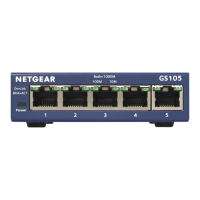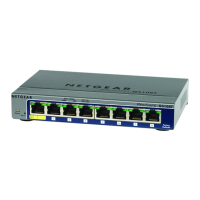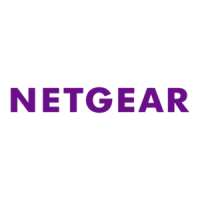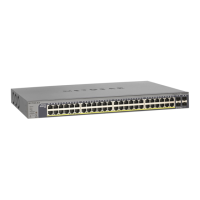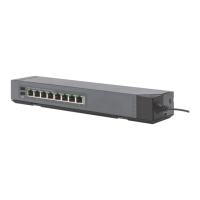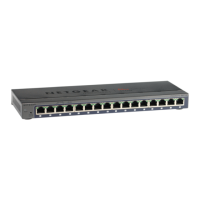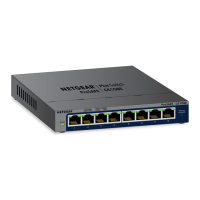Quality of Service (QoS) Commands
457
ProSafe Managed Switch
echo, ftp, ftpdata, http, smtp, snmp, telnet, tftp, www. Each of these translates into its
equivalent port number, which is used as both the start and end of a port range.
To specify the match condition as a numeric value, one layer 4 port number is required. The
port number is an integer from 0 to 65535.
Default
Format match srcl4port {<portkey> | <0-65535>}
Mode
match vlan
This command adds to the specified class definition a match condition based on the value of
the layer 2 VLAN Identifier field (the 802.1Q tag of a VLAN tagged packet). The VLAN is an
integer from 0 to 4095.
Default
Format match vlan {<0-4095>}
Mode
match secondary-vlan
This command adds to the specified class definition a match condition based on the value of
the layer 2 secondary VLAN Identifier field (the 802.1Q tag of a double VLAN tagged packet).
The VLAN is an integer from 0 to 4095.
Default
Format match secondary-vlan {<0-4095>}
Mode
DiffServ Policy Commands
Use the DiffServ policy commands to specify traffic conditioning actions, such as policing and
marking, to apply to traffic classes
Use the policy commands to associate a traffic class that you define by using the class
command set with one or more QoS policy attributes. Assign the class/policy association to
an interface to form a service. Specify the policy name when you create the policy.
Each traffic class defines a particular treatment for packets that match the class definition.
You can associate multiple traffic classes with a single policy. When a packet satisfies the
none
Class-Map Config
Ipv6-Class-Map Config
none
Class-Map Config
Ipv6-Class-Map Config
none
Class-Map Config
Ipv6-Class-Map Config
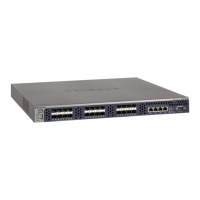
